Are you trying to figure out what to sell on Amazon? I’ve been there. Knowing which Amazon products to promote is critical to my commission fees as an Affiliate marketer.
Amazon sells nearly 400 million individual products. Beginners and even experienced sellers need help sorting through this huge market and finding the best niche to pour their time and effort into.
Save up to 20% Off Your First 6 Months Of Helium 10.
In this guide, I’m going to give you 11 powerful Amazon product research tips. I’ll also help you decide if selling on Amazon is right for you.
11 Ways To Find Products To Sell On Amazon
If you’re short on time, Helium 10 is a fantastic shortcut for finding product ideas.
What Should You Sell On Amazon?
Before we dive into details and tactics, I want to go high-level with you here. There are two ways you can succeed with Amazon.
#1 When Brand Differentiation Doesn’t Matter and You Have the Lowest Price
If you have generic products you can offer at the lowest price, you should sell these items on Amazon. It’s not a product brand name that attracts the sale; it’s the price tag. With this type of product listing, you’ll go head-to-head with other sellers, and the lowest price usually wins.
This is the main theme of Amazon. If customers want an original brand name purse, they’ll shop on that seller’s website to get it. On the flip side, if they’re shopping for a basic brown crossbody purse where brand name doesn’t matter and price does, Amazon is where they’ll go. If you offer a brandless purse, your best bet is Amazon.
#2 When You Have a Validated, Differentiated Product Idea
If your product idea is unique, Amazon product sales will take off. This happens when sellers see a market need and create a feature that no one else has, or is marketing the product strongly. With the right Amazon promotional strategy, you’ll be able to get traction with an original product idea and invest in product development to further distinguish your brand.
Basically, you create a private-label brand.
If the products you choose to sell on Amazon fall within one of the two categories listed above, you have a product area that has a good chance of being successful through this online marketplace.
And, if your products sell, you’ll make money and empty your inventory, which are pretty good goals to achieve with any business, especially an online business with potential profit margins.
Amazon is a price-driven marketplace, meaning that people visit the Amazon site to find cheap prices on the products they want and need. So, if your price or price range isn’t the best one out of a group of the same products, you won’t be getting the sale, and you’ll be stuck with inventory.
However, it is important to consider the total cost of the product, including manufacturing, shipping, and Amazon fees, to ensure that the product is profitable.
Want to make sure your product idea stands out and hits the mark? Take a good look at Amazon’s Best Sellers page. See what’s already flying off the shelves in the category you’re eyeing. It’s a straightforward way to get the lay of the land and spark some fresh ideas for your product.
Certain items will sell better on your site, while others will get the most sales by using the Amazon online marketplace. So, what products are the best items to sell on Amazon, and how do you narrow down the options to pick the right ones?
How to Find Trending Products To Sell on Amazon
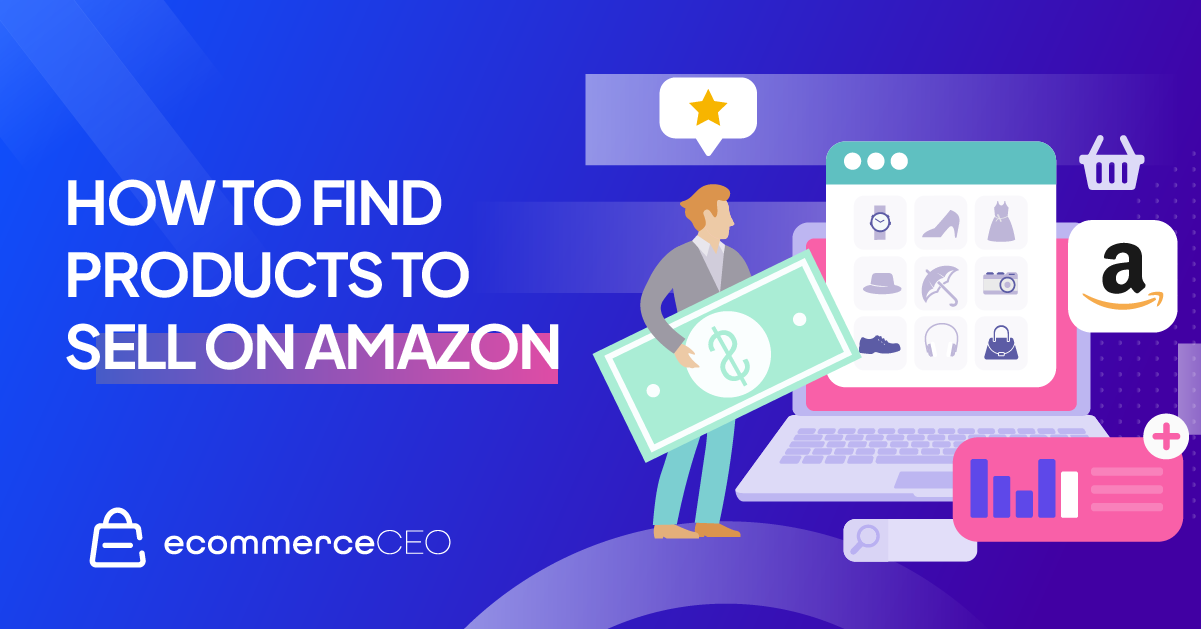
Here are eleven simple ways to find potential products that sell on Amazon:
1. Use an Amazon Keyword Research Tool
The first step to take when finding items to sell is to use a keyword tool specifically targeted to Amazon.
I recommend using Helium 10 or Jungle Scout for all of your Amazon-specific keyword research needs. This tool will help you validate product demand and show you the search volume of your product.

This step makes it possible for you to see how many people are looking for a specific product and determine whether the volume makes it worth selling it. Need more options? Check out this list of Amazon keyword tools.
2. Find Low Competition Keywords Triggering Product Ads on Google
In order to drive traffic to the product you sell on Amazon, you want to choose low-competition keywords that trigger product ads on Google.
You can find easy keywords that trigger Google product ads by following the steps below:
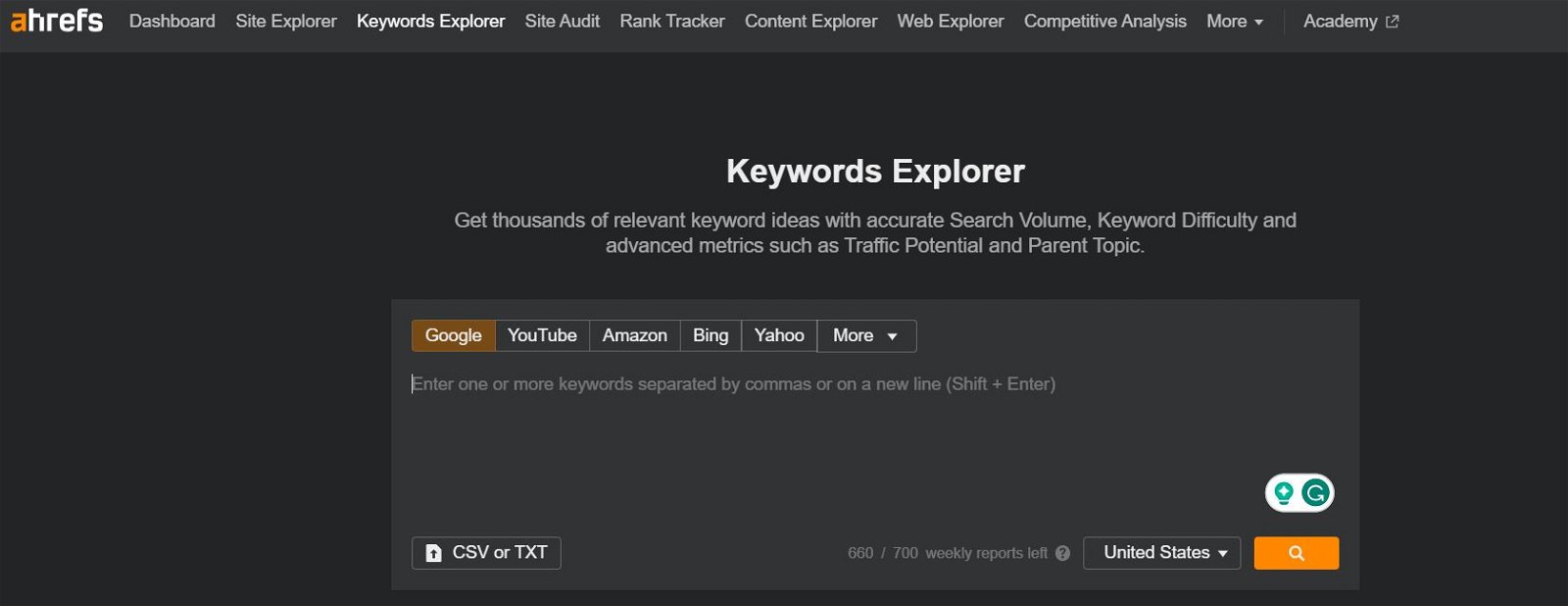
- Enter Your 5-10 Product Niche Ideas Into Ahrefs Keyword Explorer
- Click All Keyword Ideas
- Filter Results To Only Include Shopping Results
- Filter Results To Only Low Keyword Difficulty
- Click The SERP for Each Keyword
- Look For Low Domain Rank (DR) Sites
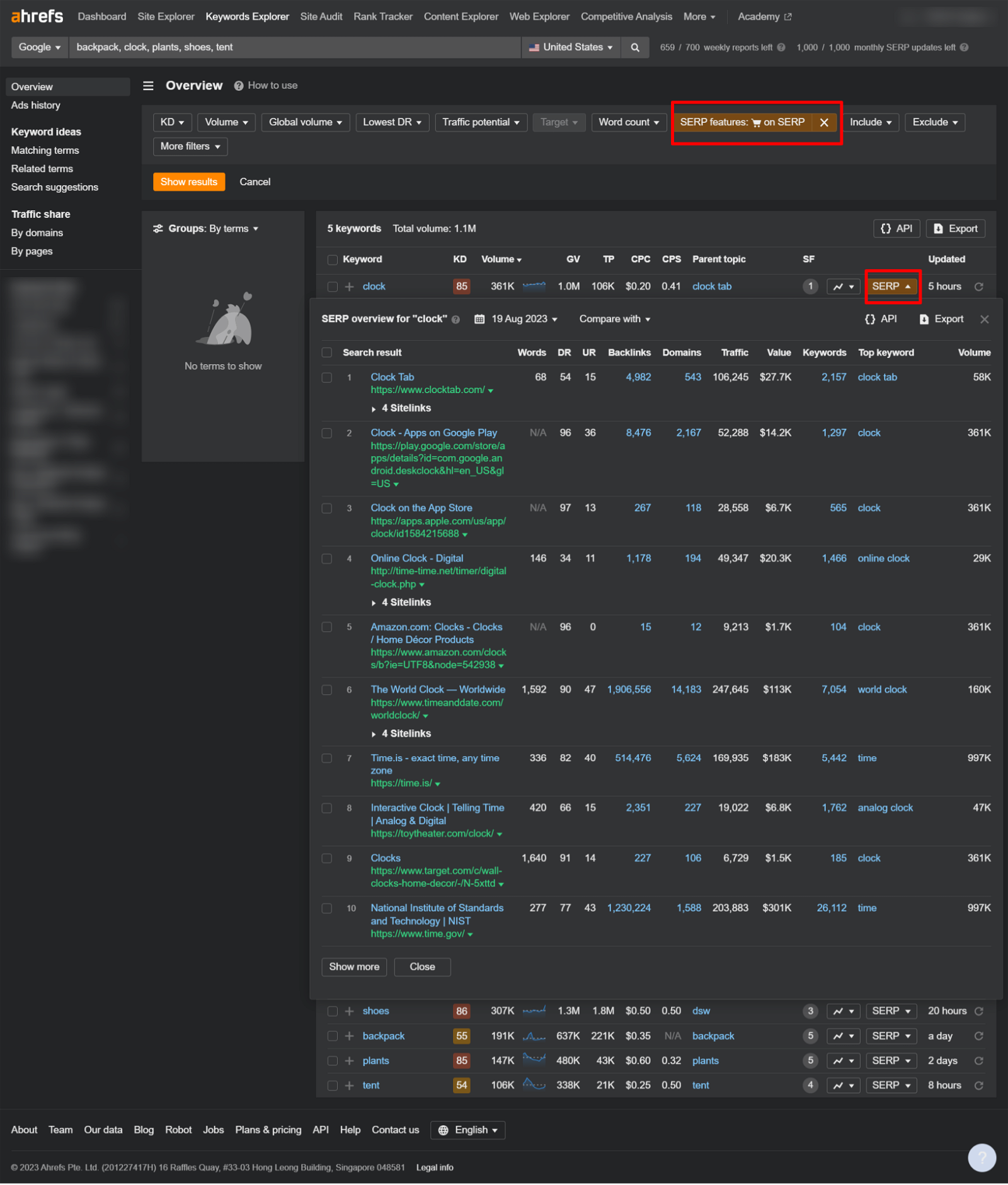
If you see several low DR sites on page one of Google, that’s a signal that the niche is less competitive.
3. Use WatchCount to See What eBay Products Sell
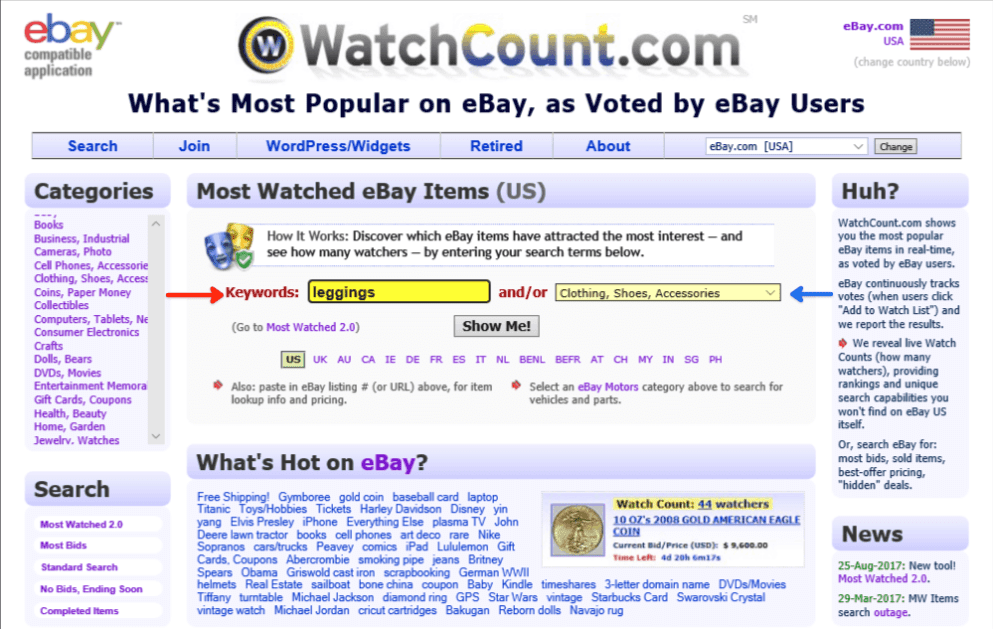
Another way to pinpoint the best-selling products for selling on Amazon is to research what’s selling on eBay. You can do this by using WatchCount.com to see hot sellers on eBay.
On WatchCount.com, you can see the most popular eBay items at any time as the site operates in real-time. WatchCount.com reports the results produced by eBay and tracks votes by users when they add an item to their watch list.
WatchCount.com details the number of watchers and includes rankings as well as unique search capabilities.
By using this site to research the highest watch list numbers, you can narrow down your list of potential items to sell and target the most popular options.
4. Use Amazon Reviews to Find Product Market Gaps
When deciding what items you should purchase to sell, it’s important to get a feel for what the customer wants. Vendors might have the time and budget for focus groups to get consumer feedback on desired products and what they like and don’t like.
But this doesn’t work for all new sellers. Instead, gather valuable customer feedback that can help you create a better customer experience.
Since many vendors don’t have the time or budget to do so, mining Amazon product reviews is a timely and cost-efficient way to decide what you should sell and why.
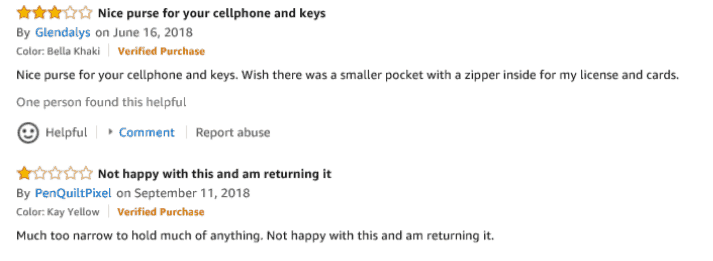
If you’re thinking about selling a specific product, research product reviews and keep the following things in mind:
- What items people are raving about
- Look for unsatisfied customers with a particular product
- Use the complaints to modify your prospective product
When you dive into Amazon reviews, you’ll get a firsthand look at what people love or hate about a certain product. You can take that information into consideration when you decide what products to sell and if you should make any modifications to the product you are going to sell.
5. Search Alibaba for White Label Products
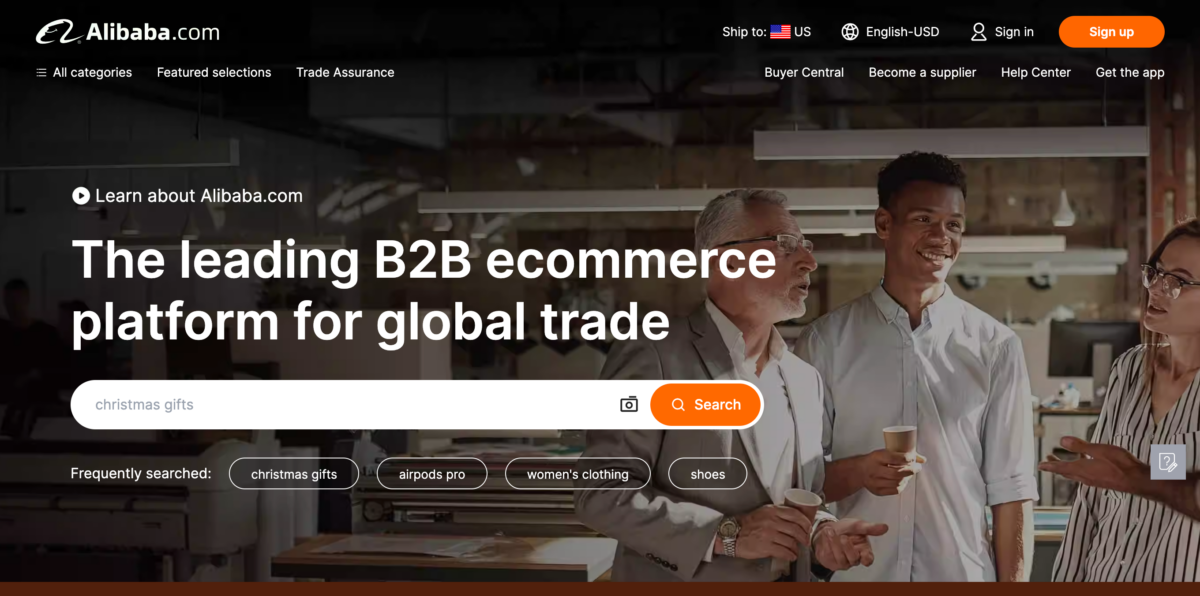
If you’re wondering where to find products to sell, Alibaba is a great place to start. You can by products wholesale and resell them on Amazon. Once you have an idea on potentially profitable products, search for them on Alibaba.

When you visit ‘Alibaba, you’ll find products of every type offered by overseas suppliers. Many of these products can be white labeled or private labeled.
6. Check Amazon Best Selling Product Categories
What’s one of the best ways to come up with product ideas? Check the Amazon best sellers list!

Since you’ll be peddling your wares on Amazon, it makes sense to see what Amazon sellers are hitting it big with when it comes to item sales on the site.
From toys and games to electronics, you’ll see the top hot sellers on Amazon when you visit the Best Sellers section.
Knowing what items are the best sellers on Amazon will help point you in the right direction as you select your inventory to sell on Amazon.
Combine this tip with #2 (the Ahrefs tip) and you’ll come up with some interesting ideas.
7. Use Jungle Scout to Find Low Difficulty Niches
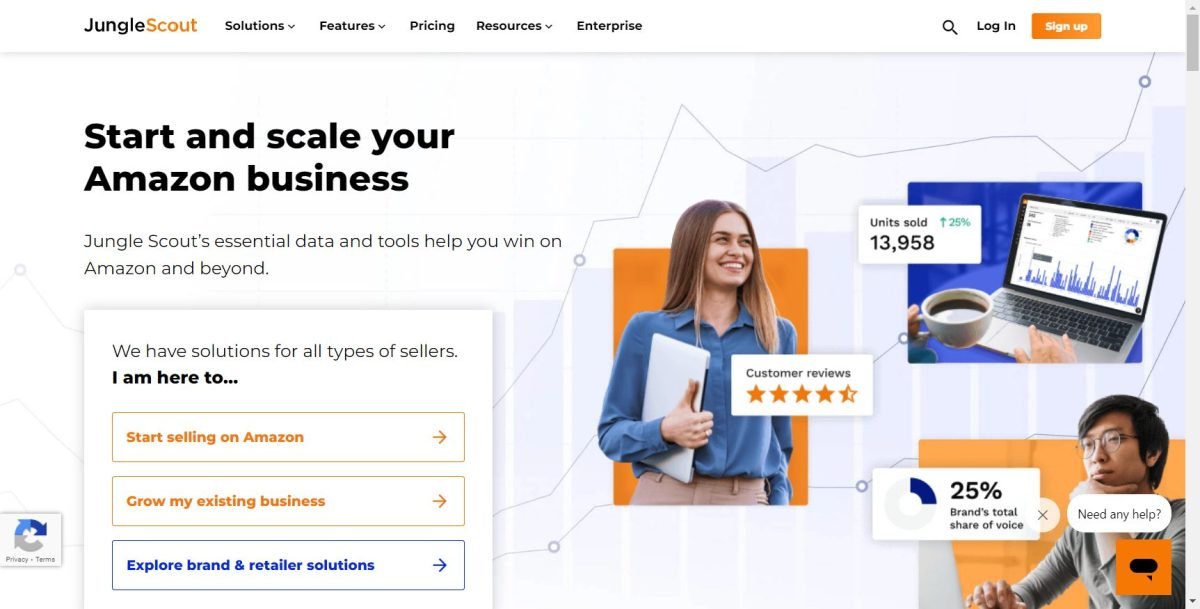
You want to choose a product that has low competition. Jungle Scout offers a way for you to input the keyword associated with your product and determine if it’s a low-difficulty niche.
Finding the best niche market is determined by various aspects, including sufficient demand, low competition, physical product opportunities, and additional monetizing opportunities.
When your product meets these features, you can rest assured that you are choosing a niche product to sell that falls within a low-difficulty category.
8. Reverse Engineer Top Industry Amazon Affiliate Publishers
To focus your efforts on the best products that are likely to sell, try to uncover where the major players are pushing traffic on Amazon. After all, they have massive marketing and analytics teams in place to avoid wasting time on products that don’t sell.
Take advantage of their research!
Step-by-step guide to finding proven products:
- Find the big publishers in your space and pop their domain into Ahrefs’ site explorer.
- Click on outgoing links.
- Sort by linked domains to see how many links they are sending to Amazon.
- Dig into those links deeper by studying anchor text to see which products they link to.
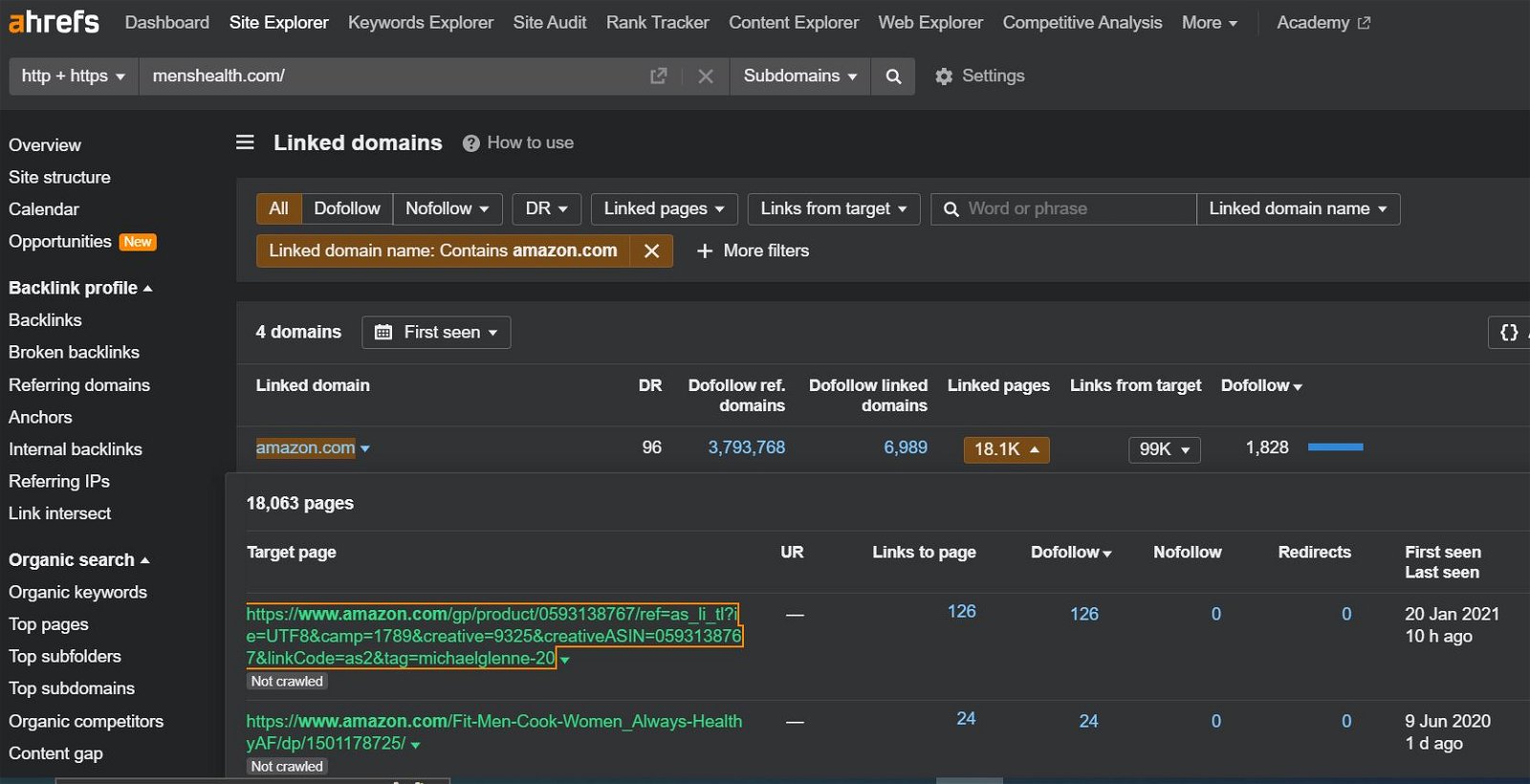
In the screenshot above, you’ll see that I used Ahrefs to identify the Amazon pages that MensHealth.com is sending their viewers. They almost certainly earn a commission on Amazon sales they generate. So, with all of their industry expertise, they’re sending customers to health-related books.
You’ll also want to consider what times of year an item sells best. Is it seasonal? You might want to avoid investing a ton of time into something that only sells well for a few months a year. Or, maybe you’ll decide that the crazy volume is worth the months of famine.
9. Research Trending Topics on Google Trends
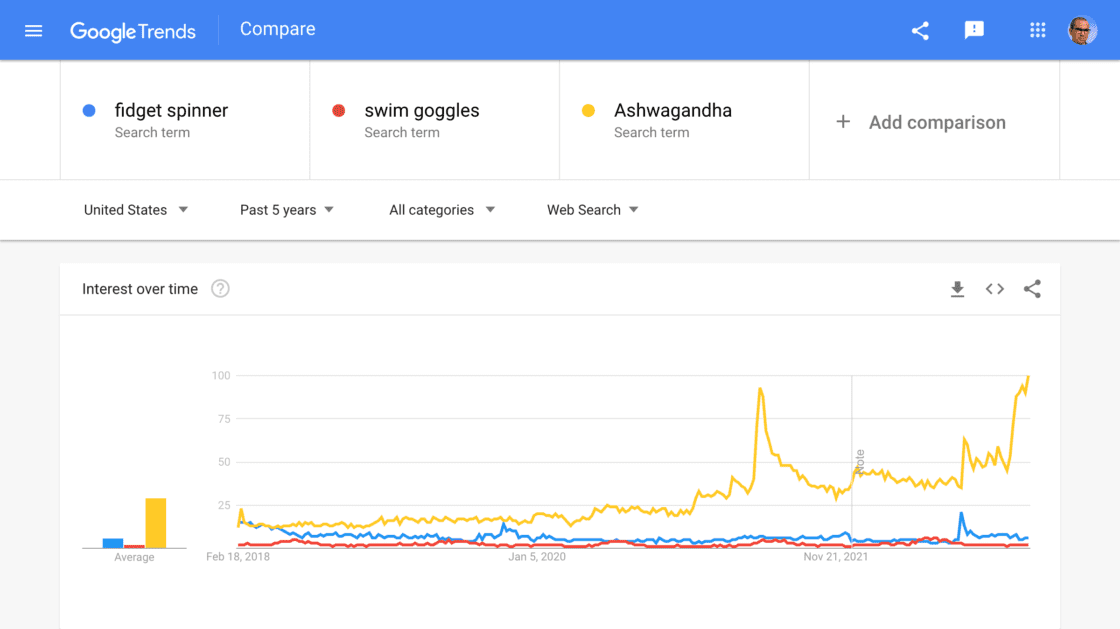
Researching the trending topics on Google can help you narrow down the options for products to sell on Amazon.
Google Trends highlights popular products, and taking note of these will help you choose a product that sells.
It doesn’t matter what niche you’re looking to target for your product to sell on Amazon. Looking at the latest Google Trends will give you an idea of the top sellers in a wide array of categories.
Google Trends is a popular research tool that you should be using to zone in on the ideal items to sell through Amazon.
10. Power Browse Amazon Listings with a Chrome Extension
Another way to choose a hot-selling product is to browse listings on Amazon with a Google Chrome extension.
There are quite a few Google Chrome extensions that Amazon sellers use to research products and determine how well these products will sell on Amazon. Some of the top Chrome extensions include the following:
When you use any of the Chrome extensions listed above, you can browse Amazon listings quickly and fully, determining what products should be on your seller’s list. In addition to zoning in on the best sellers, you can compare product prices, mull over sales estimates, dive into revenue projections, and consider keyword insights.
11. Use Amazon’s Product Opportunity Explorer
This tool is a game-changer for online vendors. You’ll need a paid Amazon Seller Account to access it. The product opportunity explorer provides valuable insights into customer behaviors, market trends, and potential earnings, enabling sellers to make data-driven decisions.

Navigate the complex marketplace with ease, identifying high-demand products, discovering untapped niches, and optimizing your strategy. Whether you’re an established seller looking to diversify or a newcomer seeking a strong start, this tool can be a vital asset.
Selling Wholesale? Not So Fast…
If you’re pondering selling wholesale merchandise on Amazon (where you buy somebody else’s brands to resell it), you may want to reconsider this venture.
Offering wholesale products from another brand can be tough since you’re always one click away from a lower price. Plainly stated, the competition is really just too fierce, and diving into it can be a mistake.
I know because I’ve failed at this sales model previously. This isn’t to say that we didn’t drive plenty of traffic to our Amazon listings and own website because we did. The inventory didn’t move.
Of all of the business models you have the opportunity to pursue, you have the least leverage in retail (wholesale and dropshipping). So, if you plan on doing retail arbitrage, Amazon’s business will be cut-throat..
If you’re really set on using the wholesale business model, the only way to get leverage is through logistics. This means having your own warehouse and doing your own shipping or drop shipping. But, even then, you’ll be at the mercy when it comes to the terms of the supplier.
If you want to go for an Amazon FBA, you’ll still have some logistics issues to deal with, including getting your products from the supplier’s location to the Amazon warehouse.
How to Decide What to Sell on Amazon
Once you know the ways to find products to sell on Amazon, you have to decide what you’re going to sell via the Amazon marketplace.
Maybe you already have an idea of what you want to sell, and you have the data to support selling this type of product. Or, maybe you’re still considering your options and need some additional help in this department. If the latter category sounds like you, there are specific ways to decide what to sell.
- Using data: Amazon search volume, Google search volume, competition, SEO difficulty, market trend data.
- Profitability analysis: How do your wholesale prices compare to retail? Do you have at least a 40% margin?
- Presence of big brands: Are there established brands already selling products in this niche?
Let’s dive into each one in more detail.
Compare Product Ideas Using Data
Before picking a product or products to sell online, you want to compare your product ideas by using concrete data.
Reviewing available data will help you find out information such as search volume, keywords, and more so you you can avoid painful mistakes.
Product Search Volume
If you’re wondering what site, Amazon or Google, is more popular for product searching, there’s conflicting data out there. So, with this in mind, you want to understand the search volume of both.
Comparing the search volume of both Amazon and Google will ensure that you have a clear and true picture of what products people are searching for online. Utilize tools like Google Keyword Planner or SEMrush to conduct keyword research and gain insights into popular products and niches.
Google Search Volume
You want to keep the Google search volume in mind when narrowing down options to the products you’re going to sell.
When you know what people are buying, you can decide what items will fly out of your online store the fastest.
The Google search volume measures the total number of searches performed via search engines. These are noted as an average monthly volume over the past 12-month period. This data is crucial to consider as one of your determining factors with product research and enables you to choose the right product to sell on Amazon.
Keyword Difficulty
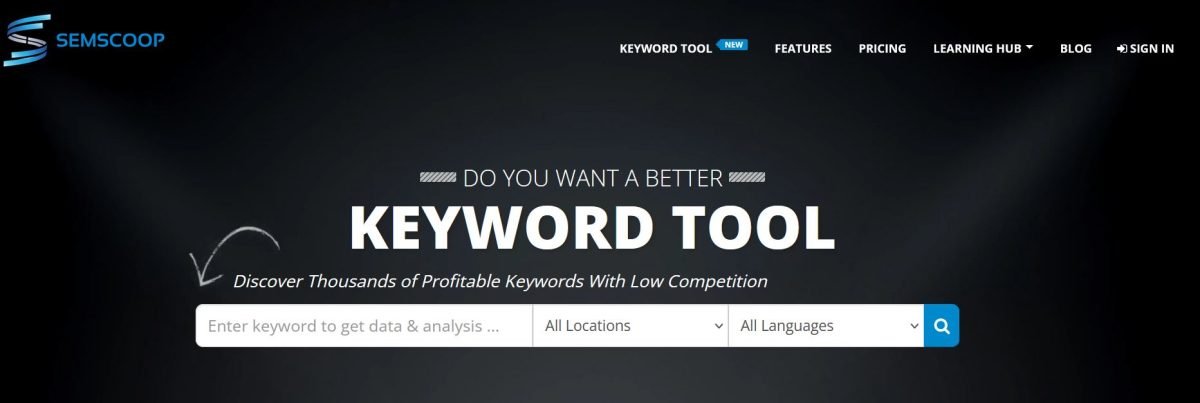
You want to choose the most profitable keywords with the lowest competition. To do this properly, you need an online tool that will help you gather the data and get you ready to sell on Amazon.
SEMScoop is a free online tool that analyzes keyword difficulty and competition.
This promising newcomer offers a free plan and priced plans, with plans as low as under $10 per month. The priced plans are good options if you plan to use SEMScoop on a frequent basis in the daily dealings of your business.
Amazon Search Volume
In addition to Google search volume, you’ll want to research the Amazon search volume. This is especially important since this is the platform you’ll be selling on. It gives you a great idea on which products are in high demand.
Amazon Competition Level and Number of Amazon Sellers
The next step is looking at the competition amongst Amazon sellers for that type of product.
When you know how many sellers are offering a specific product on Amazon, you can see if the competition level is high or low and whether it’s worth it to try to enter the market with that particular product and sell on Amazon.
Review Monthly Sales History
Helium 10 has a listing analyzer where you can review Amazon sales history. The feature may not be 100% accurate, and it is best for you to compare products than to take the online sales numbers as gospel.
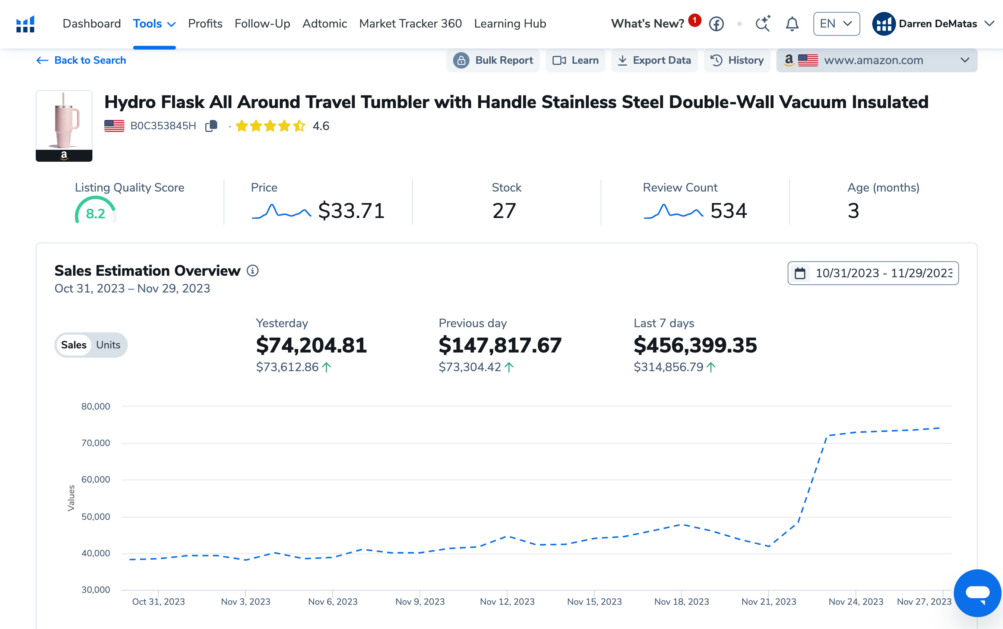
Compound Annual Growth Rate (CAGR)
The compound annual growth rate (CAGR) is the rate of return that’s needed for an investment to experience growth from the beginning balance to the end balance.
The CAGR isn’t a true return rate, but it represents the rate at which the investment would have grown if it did so at the same rate each year, with the profits being reinvested at the end of every year.
CAGR will help you determine if long-term market growth is a possibility. If not, you may want to put this product on the shelf and look for other product ideas for your Amazon sales site.
You can compile information on CAGR by completing the following steps:
- Search on Google and discover market research documents: Use words such as “keyword market growth” or “keyword CAGR” in your search.
- Purchase a market research document or look further for free info: You can choose to spend the money to buy one of the market research documents you found in your search. Or, you can keep searching for free information.
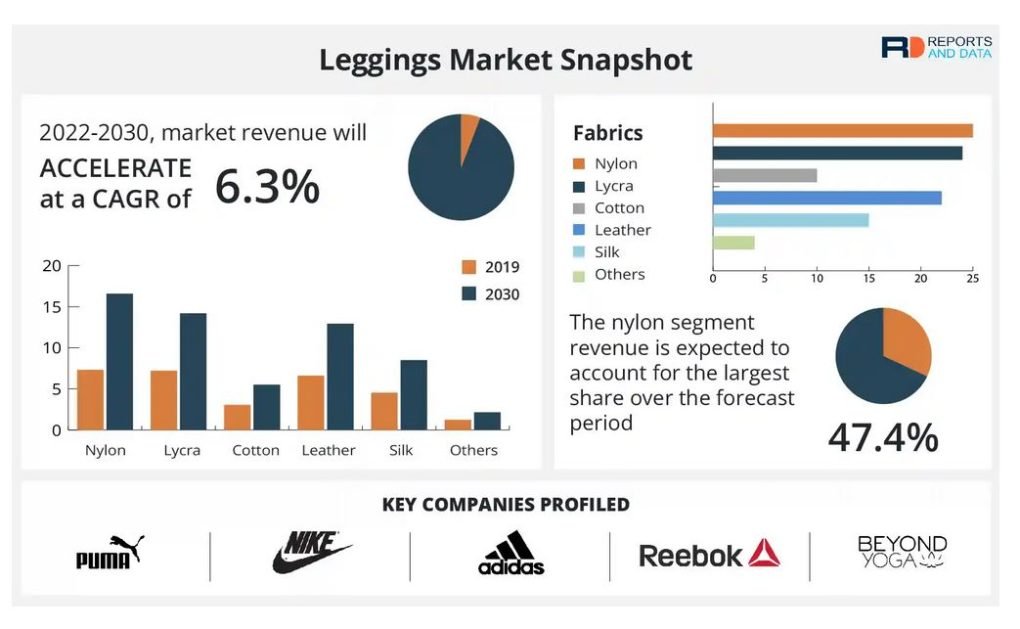
Image Source: reportsanddata.com
Use the CAGR data for idea comparison and to validate market growth. Once you have the CAGR data, put it down in writing. Use this information as part of the determination of whether or not you can build a successful brand on specific products.
Potential Market Size
As you carefully consider product ideas, you have to look at the potential market size. How big can this business be? Is there a demand for your product? Has there been a demand for your product in the past? What are the changes in market size?
When you consider all of these questions before you start selling on Amazon, you can look to the future and get an idea as to how successful this product will be and if it will sell or fail.
Check Potential Margins Before You Buy
Before you pull out your credit card and start purchasing products from just anywhere, make sure you understand the potential margin markup of the products you want to sell.
This means comparing wholesale and retail pricing. You want to get the best purchase price for your products, so researching this aspect is a must.
Compare the wholesale of Alibaba with the retail of Amazon pricing to see which prices would benefit you most.
You should also determine if AliExpress or Alibaba is a good choice to pursue.
The good news is that there are options when it comes to buying the least expensive products and gaining the greatest margin. Whether you choose wholesale or retail vendors to help you do this will be determined once you do a bit of research on this topic.
Avoid Big Brands, Especially Amazon
When you’re honing in on a specific category of products make sure you avoid categories that cater to big brands, especially Amazon brands.
When you enter the market competing against big brands, you’re setting yourself up for failure, or at least a less-than-lucrative product market.
Amazon Success Checklist
Amazon’s FBA (Fulfilled by Amazon) program eliminates a lot of the headaches associated with fulfilling online orders. This business model might not be for everyone.
Before you even start to have visions of handfuls of cash coming your way, you need a few things checked off the checklist in order to make money on Amazon or with any business:
- You have to understand your true product cost
- A sufficient gross margin (at least 20% after all product costs)
- Determine your overall startup costs
- Figure out your break-even point
- Forecast your revenue
- Implement performance-based marketing based on revenue projections
- You have to move inventory – if you don’t move the inventory, you’ll lose money due to product costs and storage fees.
Ready To Launch Your Amazon Store?
I hope you enjoyed my guide to finding products to sell on Amazon. If you follow my advice, you’ll increase your chances of earning a nice profit margin and decrease trips to the store to buy Advil.
Nothing’s worse than putting in hundreds of hours to market a product on Amazon, only to find that consumers don’t want it or a major brand is drowning you out. Before you get started, make sure you understand Amazon’s fees.
Also, make sure you understand that Amazon’s business is based on finding popular products, private labeling them, and then undercutting the competition. So, if you want long-term ecommerce success, you need to sell on your own site or utilize Amazon affiliate marketing. Otherwise, Amazon will eventually drown you out.
When choosing what to sell on Amazon, Helium10 is my top go-to tool.
Remember, you need one profitable product idea.










